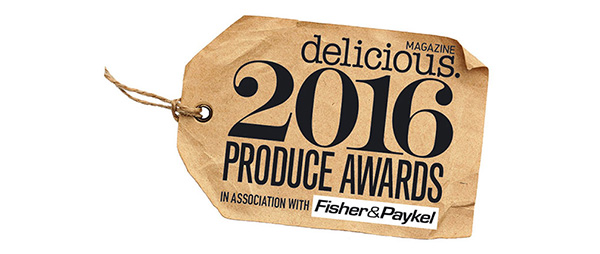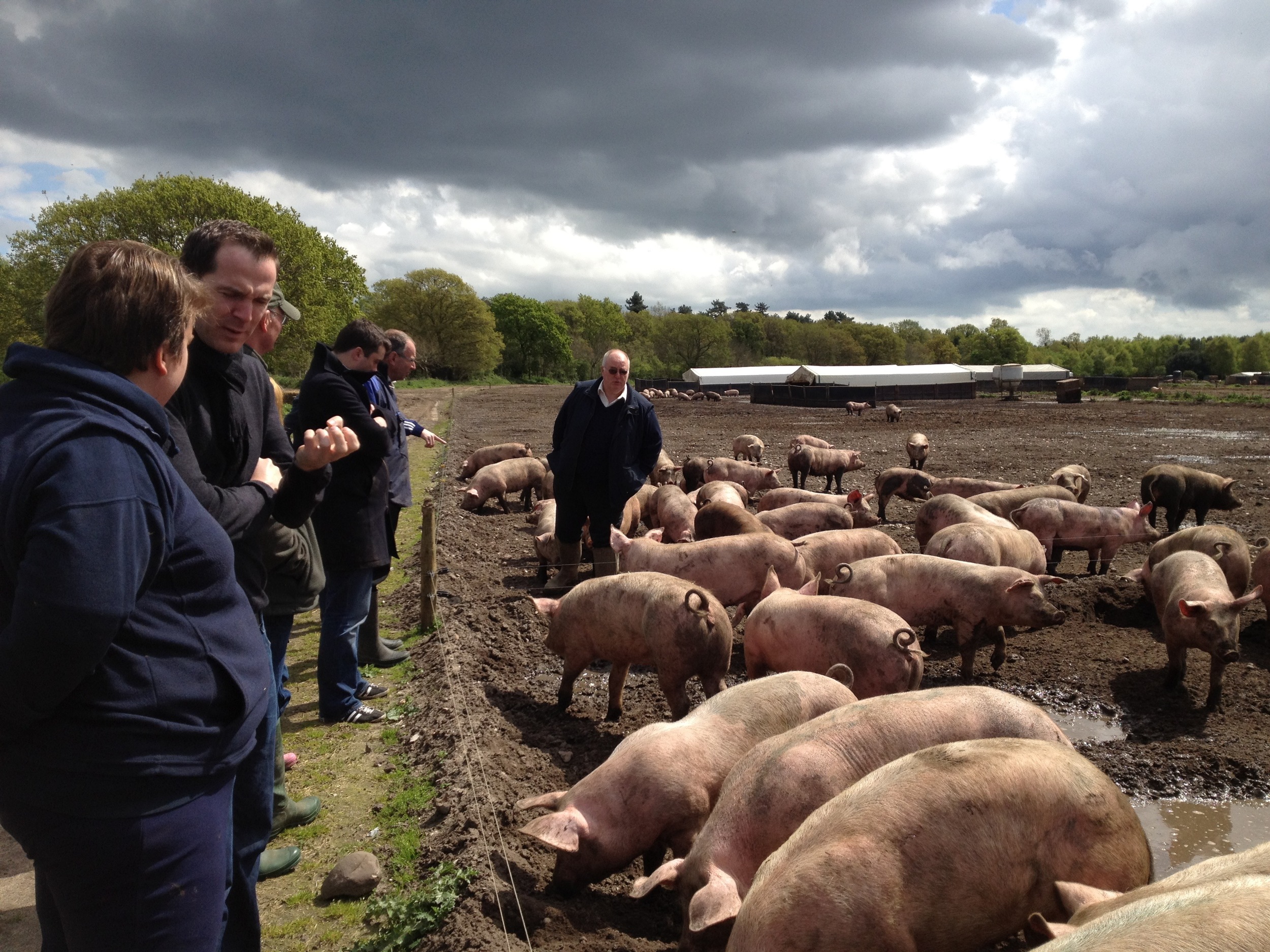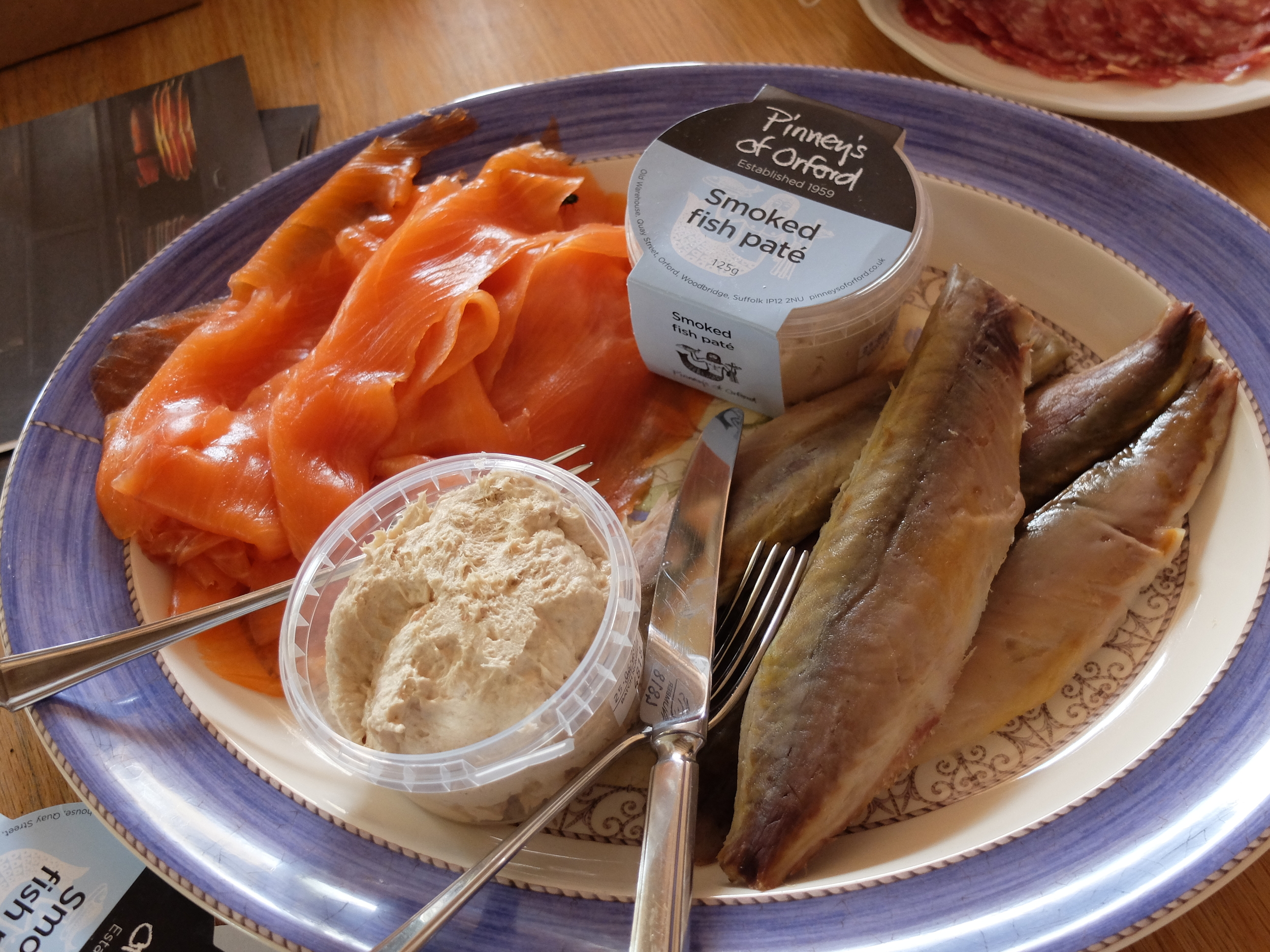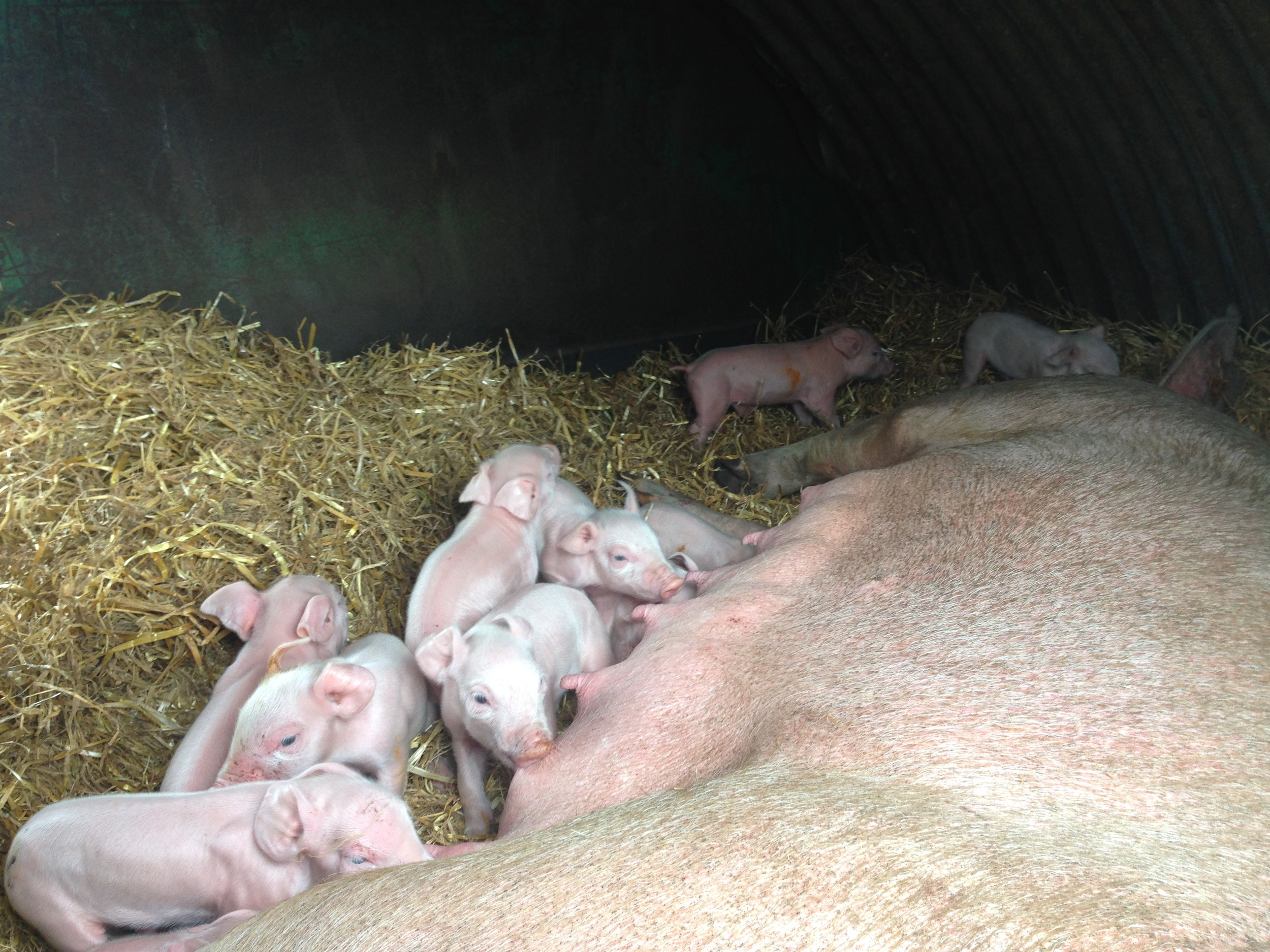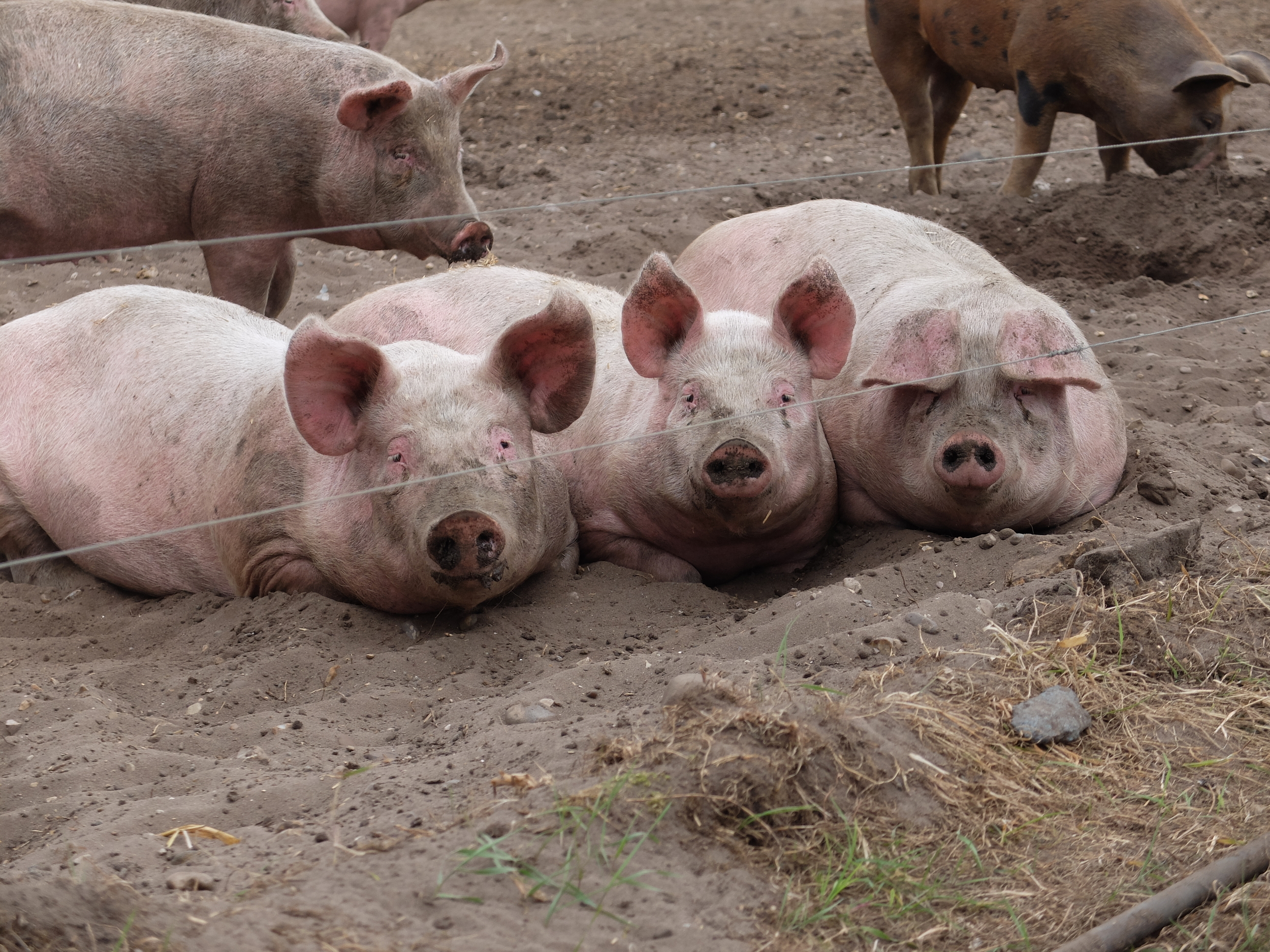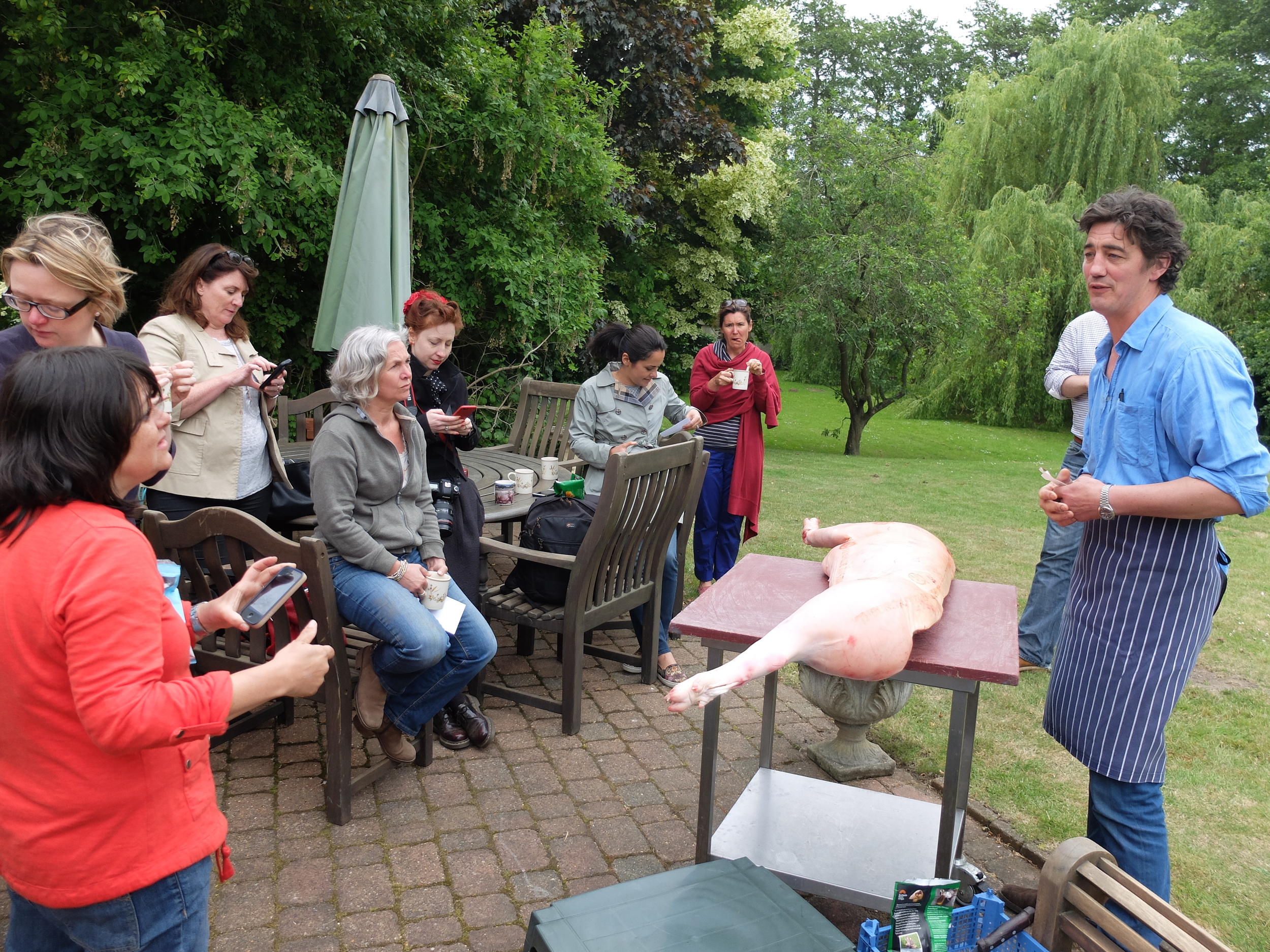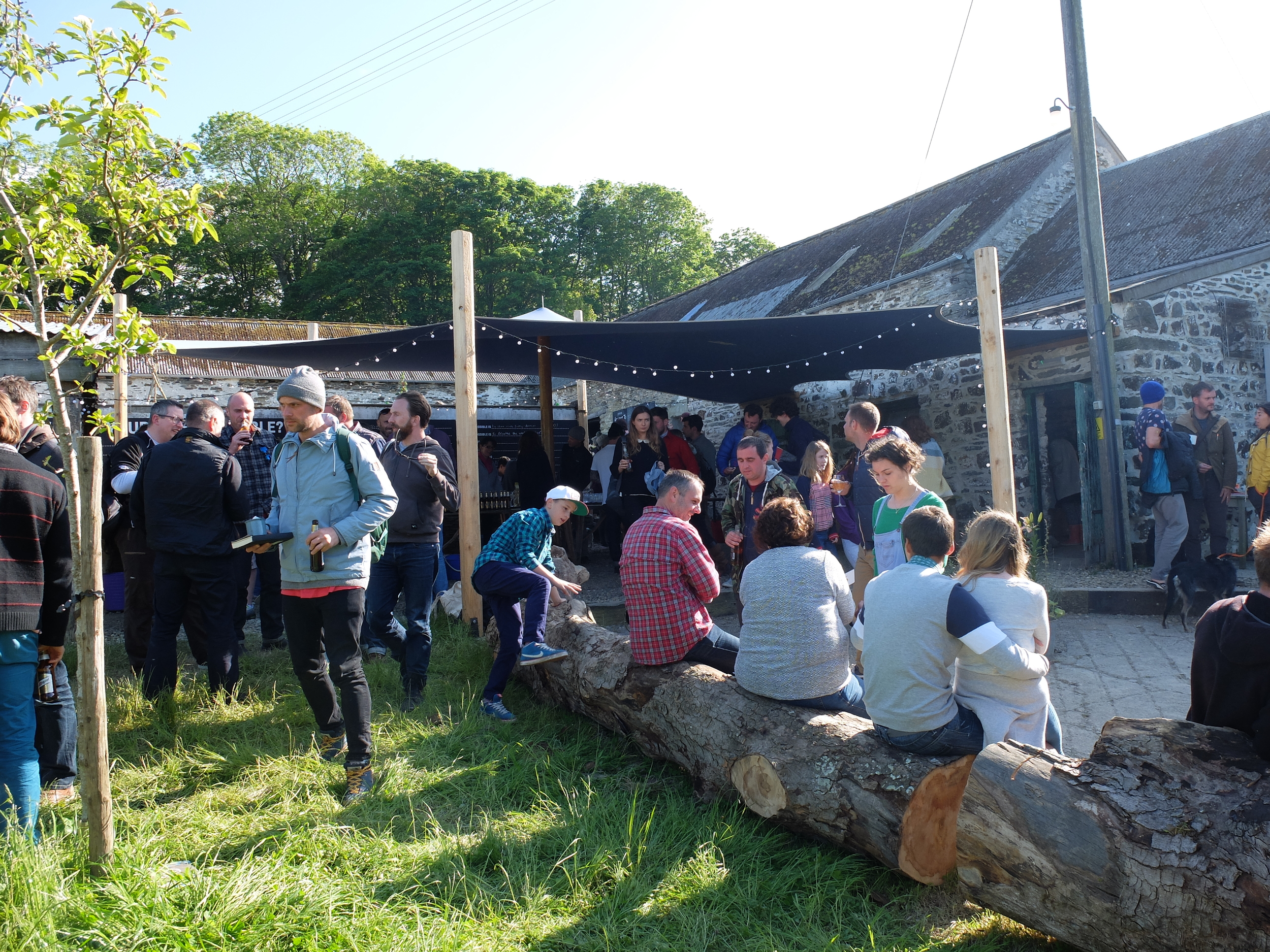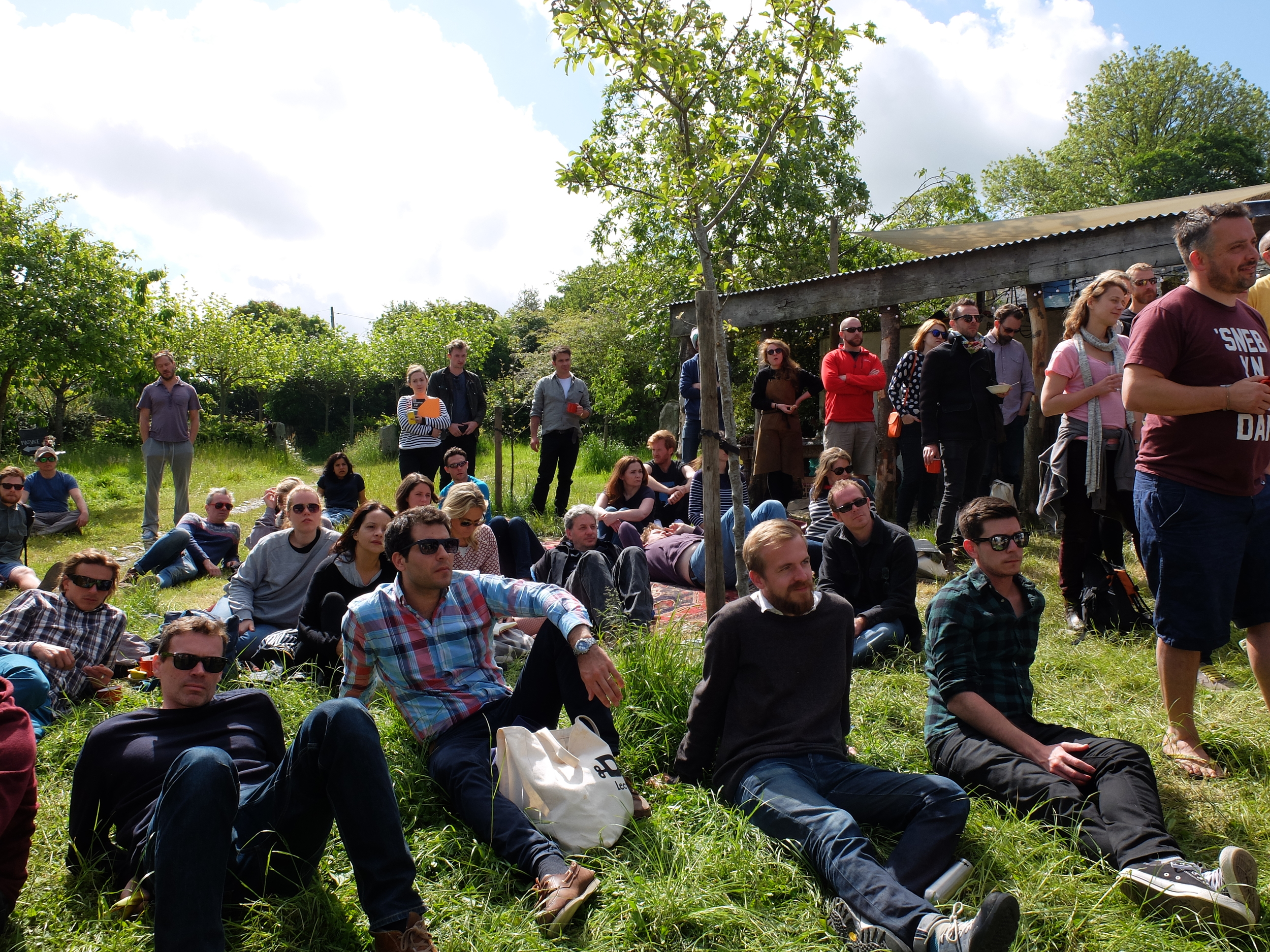
BLOG
Inspiration and news
2019 UK Restaurant Trends and Predictions
2019 begins with great political and economic uncertainty but what does it hold for the restaurant industry?
The uncertainty is causing a decline in the share of UK consumers eating out, as we show greater prudence with our discretionary spend. According to a new poll by YouGov, almost a third of Britons are visiting restaurants less frequently than last year.
Here are my predictions for what we’ll see, or see more of in 2019. It will be very interesting to see how these trends in the restaurant sector will play out in 2019.
Read my 2020 UK Restaurant Trends and Predictions on my new post >
2019 begins with great political and economic uncertainty but what does it hold for the restaurant industry?
The uncertainty is causing a decline in the share of UK consumers eating out, as we show greater prudence with our discretionary spend. According to a new poll by YouGov, almost a third of Britons are visiting restaurants less frequently than last year. The number of lunches eaten out of home in November 2018 was the second lowest on record, after a 3% year-on-year fall, while growth at other meal-times was stagnant according to MCA’s recently launched UK Restaurant Market Report 2018 – conducted via online consumer surveys, analysis of MCA’s market sizing and company specific research.
Here are my predictions for what we’ll see, or see more of in 2019. It will be very interesting to see how these trends in the restaurant sector will play out in 2019.
1. FOOD WASTE
Reducing food waste has been a hot topic for some time. Silo in Brighton became Britain’s first zero-waste restaurant when it opened in 2014 and now others are following suit. 2019 will be the year that restaurants will have to take action and demonstrate to customers that they are tackling the problem. Until now consumers have been increasingly aware of the food wasted in their homes and by supermarkets, this year the attention will turn to restaurants. “If people weren’t already persuaded by the environmental and social impact of food waste, the economic argument has begun to sound persuasive,” says Andrew Stephen, chief executive at the Sustainable Restaurant Association (SRA), which reports that more than 80% of its members now separate their food waste (a proportion that falls to two-thirds for independents).
According to Wrap (The waste reduction organisation) food waste represents a cost to the restaurant sector alone of £682 million each year including food procurement, labour, utilities and waste management costs, or £3,500 per tonne. Wrap estimates that 51% of all waste is recycled. This is made up of: 65% of packaging and other wastes are recycled. Rates of food waste going to composting or to anaerobic digestion (AD) are very low. Almost 900,000 perfectly edible, freshly prepared meals end up in the bin in the UK every day because they haven’t been sold in time by restaurants and cafes according to food waste app Too Good To Go.
Numerous new schemes and technologies are now on the market to help hospitality businesses reduce food waste, such as and Too Good To Go, an app that enables people to buy food from restaurants that would otherwise go to waste. The smart way to deal with food waste is to reduce, recycle and reuse, whether that’s through creative use of leftovers or taking it back to the farmer’s field where it began as compost.
2. PLANT-BASED DINING
The rise of veganism is not news but will only grow stronger in 2019. Plant-based, vegetable-led dining will become even more mainstream. Some hospitality businesses have refused to adapt claiming vegetarianism and veganism is just a passing fad, yet 2019 will be the year that we have to embrace plant-based food as a development that is not going away. Winners will respond by giving vegetable-led dishes equal status on their menus while not alienating meat eaters. It’s not just the increase in vegans and vegetarians but also those of us choosing a ‘flexitarian’ approach.
According to Waitrose & Partners Food & Drink Report 2019 one in eight of us – or almost 13% of the population – is now vegetarian or vegan, with one in five (21%) identifying as ‘flexitarian’. For the first time, The Good Food Guide 2019 by Waitrose & Partners has highlighted restaurants with specifically vegan menus - a list that reaches 107.
With vegetables as centre stage, we’re seeing great innovation to introduce new flavours and textures. Once underrated home-grown vegetables like celeriac and swede rise in prominence, while others like avocado will see a demise as we become aware of their environmental impact.
3. THE BLUE PLANET EFFECT
Once seen never forgotten, BBC One’s Blue Planet II made us all wake up to the impact that plastic is having on our environment, not least the scenes of albatrosses feeding their young plastic. Waitrose & Partner’s research suggests that of those of us who saw the programme 88% of us have changed our behaviour as a result marking a new era of environmental awareness. Consumers will question restaurants’ use of plastics as well as the food industry and retailers and will demand an end to single-use plastics.
We’re already seeing a backlash against plastic straws and a search for practical alternatives. The take-away and street-food sector will be forced to rethink packaging to find sustainable alternatives, not only take-away cups but also food carriers and cutlery. In restaurant kitchens, chefs will have to find alternatives to storage materials like cling film. The Sustainable Restaurant Association (SRA) has lunched a guide to help hospitality business find viable alternatives and make decisions and held an sent Unwrapping Plastic Use and Misuse in Hospitality.
Skye Gyngell from Spring restaurant in London said that the issue had been brought into focus after she worked out that since opening Spring her team had used enough clingfilm to stretch from their central London location to Istanbul. Gyngell said: “Single-use plastic is a really serious issue, but we shouldn’t be catastrophising it. Instead, we should recognise that we are better off now than we were 50 years ago and face up to the fact that this is our challenge, our problem to solve now. It’s also really important to understand that it’s nowhere near as hard you think to use less plastic.”
4. TRANSPARENCY & TRUST
As consumers become more concerned about the environmental and health impacts of their diet, transparency is key. Consumers will demand clear information about raw ingredients such as the use of controversial products like Palm Oil, the farming standards (organic, free range etc) of the food on their plates and the specific sources of meat, dairy and vegetables.
After years of the media revealing the less than savoury truths about the food industry, consumers want to know what’s really in the food they’re eating and they’re more likely to pledge loyalty to brands that they can trust. Consumers know they have a choice, and will always prefer brands that take an extra moment to cater to their needs such as a simple “GF” next to gluten-free dishes on the menu.
Consumers will ask questions about the food they are buying. The best operators will provide the answers and address consumer concerns. Chefs should prioritise shorter supply chain sustainability and ensure that all staff front of house and in the kitchen can talk confidently about their sourcing.
5. CALORIE COUNTING
As part of the Government’s goal of cutting childhood obesity, Public Health England has proposed guidelines to impose calorie caps on ready meals, sandwiches and restaurant dishes The announcement has largely been met with derision by the industry with chefs like my client Andrew Sheridan, from Sosban in Llanelli telling The Telegraph: “The world's gone absolutely bananas. It would take the enjoyment out of it. Going out for a nice meal is supposed to be indulgent, you don't want to be sitting there counting calories."
It seems like an impossible ask for small independent restaurants to carry the burden of the nation’s growing obesity epidemic. But for the mass market where portions are often unnecessarily large it's important to know the nutritional content of the food we're eating, not just calories but also fat and salt.
The guidelines are only at consultation stage and how, if at all, they are implemented remains to be seen, yet restaurants should be aware of the debate and consumer expectations.
6. SMALL IS BEAUTIFUL
2018 saw a well-documented shake up of the casual dining sector. Perhaps one of the positive outcomes of which has been the way that it’s allowed the independent sector to shine. Today’s cynical consumers see through brand gimmicks and chainy sameyness and seek authenticity and individuality. In 2018 restaurant sector growth was greatest in the regions outside London as operators seek less crowded markets, although disposable income is lower outside London, there is a far lower presence of modern, highly branded restaurant chains.
Small secret restaurants with backdoor entrances or hidden within a larger restaurant are also something we expect to see more of in 2019 such as Nuno Mendez Mãos and Kirk Haworth’s Saturday only restaurant Plates in Hoxton.
Likewise small focussed menus will appeal to diners and will mean less complexity in the kitchen, a leaner supply chain, lower food costs and less food waste too.
7. AUTHENTIC EXPERIENCE ECONOMY
The pressure on disposable income means eating out will become more of a treat and so diners will expect a great quality experience, not just in terms of the food and drink. The whole dining experience needs to be memorable to encourage people through the door and keep them coming back.
Consumers will seek out unique experiences whether discovering a true slice of local or ethnic cuisine on holiday or down a neighbourhood side-street, a pop-up restaurant or a supper club in someone’s home kitchen. An Eventbrite survey discovered that 75% of people said that they believe unique dining experiences are worth paying more for.
Diners want to be engaged and entertained. Research by Barclaycard in 2018 found half of consumers (52%) would rather pay for a good experience than splash out on material possessions. The same number (52%) would choose to tell their friends and peers about an enjoyable brand experience rather than a purchase they’ve made. 68% of respondents said the setting they are served in is as important as the food or drink itself – a clear sign that providing the best quality product or price is no longer enough.
8. TECHNOLOGY EVOLUTION
2019 will see big changes to how technology is used in the hospitality sector both front of house and in the kitchen.
Technology can increase convenience and reduce costs in both restaurants and pubs and home-delivery. The ability to book a table via an app or social media is already widely available. We’re increasingly seeing the use of apps to check accurate waiting times for tables in restaurants where making reservations ahead is not an option.
Once inside the restaurant technology increasingly offers diners a seamless experience from viewing the menu, ordering and paying. In restaurants where orders are sent straight to the kitchen via tablets or other devices, it reduces misplaced orders, the need to decode poor hand writing and provides and instant and accurate record for the most popular dishes. Technology can be linked straight into stock management systems to facilitate easy ordering.
Technology can also provide solutions to supply chain transparency and traceability, manage food waste and improve customer loyalty.
While speed and convenience may increase satisfaction, it’s crucial to remember that it’s no substitute for real personal service and relationship building.
Your online reputation matters - here's why
Everyone is a food critic today. When we’re looking for somewhere to eat, stay, or shop we are influenced by reviews on Tripadvisor, Google, Facebook or elsewhere.
Restaurants, hotels and pubs cannot afford to ignore what is being said about them online. How should you manage your business or brand’s online reputation?
Everyone is a food critic today. When we’re looking for somewhere to eat, stay, or shop we now are much more likely to be influenced by reviews on Tripadvisor, Google, or Facebook than we are by a business’s website, social media or even reviews by professional critics.
Reputation Economy
We’re living in the ‘Reputation Economy’ where choosing where to eat has been democratised. Online reviews are the new word of mouth - just a bit more public than a chat over a drink with friends.
Don’t bury your head in the sand.
Restaurants, hotels and pubs cannot afford to ignore what is being said about them online (and that includes social media). Making time to track and respond to online reviews and customer feedback is crucial to all hospitality businesses.
Your online presence on sites from Tripadvisor or Facebook to specialist sites like Squaremeal or OpenTable is just as, if not more important than your website and social media.
Why responding to reviews matters
Keep your finger on the pulse and your business will reap the rewards. Responding to reviews, listening to the voice of the customer, and resolving their issues will go a long way in helping you protect your restaurant’s online reputation; more importantly, review management will provide you with the insights that you need to consistently deliver great dining experiences.
Prove it to me
- 87% of consumers in Europe and US say they are influenced by online reviews
- 53% 18-34s say online reviews play an important role in their decisions
- 7 in 8 diners will go online to choose where to eat
- 86% will check menus online before eating out
- 44% turn to their mobiles to find somewhere to eat while they are out and about
- 80% make reservations online
- People look at 6-12 reviews before making a decision
- 53% expect businesses to respond to negative reviews within a week
- 94% say an online review has convinced them to avoid a business.
What does this mean for my restaurant?
Start by Googling your business and go through all the results to see what people are saying about you and which sites are having the most influence on your reputation.
Pay most attention to the first page of results, but don’t stop there….
If you have Google Analytics set up on your website, look at which sites are driving the most traffic to your website.
Do an audit
Start by making a list of all the places your business is mentioned online. Is all the information up to date - opening hours, contact information, menus and photographs up to date? What’s your star rating and general feedback like? Make an action plan to update each listing and add your current menus and fresh quality photos.
Follow these 10 simple steps to manage your online reputation >
Which review sites are most important and where should I focus?
Tripadvisor, Google, Facebook, SquareMeal, OpenTable, Zomato, Yelp, Hardens, AA, Instagram, Twitter, your website - understandably it can seem overwhelming to manage reviews and listings and share fresh content in all these places.
Which review sites are the most influential and where should you focus your effort.
It goes without saying that Google is the world’s biggest and most powerful search engine but it’s also increasingly becoming the most influential restaurant review platform. While Google Business means that we can access all the key information we want from the home page without even visiting a website.
Google Maps is even starting to role out showing customers queuing times for a table or service, although it’s not arrived in the UK yet, it won’t be long.
63.6% of consumers say they are likely to check online reviews on Google before visiting a business — more than any other review site.
Google’s dominance is only going to grow and to eclipse other sites. In addition, user reviews will start to heavily influence search engine optimisation (SEO) results as Google’s algorithms take into account positive and negative reviews, prioritising positively reviewed businesses.
TRIPADVISOR
Is the world’s biggest travel site. It launched in 2000 and every month 456 million people – about one in every 16 people on earth - visit TripAdvisor.com to plan or review a trip. According to Tripadvisor’s own “Diner Decision Making Survey”
UK consumers surveyed:
- 87% said online reviewers influence their decisions about where to eat
- 87% say Tripadvisor inspires them to try new restaurants
- 52% say online photos influence them
- 95% say Tripadvisor is the most accurate review site - 2% Facebook and 3% Google.
OTHERS YOU CAN'T IGNORE
And don’t forget to monitor what people are saying about your brand on Twitter and Instagram and thank or respond to them there too.
Trends to consider
Reviews are getting shorter, simpler and more to-the-point reviews. The average review is 65% shorter since 2010 and is now roughly the size of a tweet.
There are more and more positive reviews. Reviews are increasingly shifting from being a place where consumers air their grievances to being a place to recommend businesses after a positive experience.
For more recommendations on how to manage your online reputation follow these 10 simple steps >
10 Steps to manage your restaurant’s online reputation
Follow these 10 simple steps to manage your business or brand’s online reputation.
Today we're all critics. Your busiesss's online reputation matters. Follow these 10 simple steps to managing your online reputation.
1. Claim or update your business list on Google My Business.
Make sure that your opening hours, contact details, and map location are correct.
2. Do an audit
Make a list of everywhere you business appears online and make sure the information is up to date and accurate. Some listings you will be able to easily update, others like AA or Squaremeal you will have to contact to request an update.
3. Share your menus
Don’t just put your menus on your website. People check menus online before making a decision to visit so make sure they can find current menus easily at least include a link to the menus on your website. [Share menus on social media too and tell people when you introduce a new dish or seasonal menu].
Since early 2018 Google has enabled restaurant owners to upload menus straight on to the information pages of their listing.
4. Update your photos
Photos say a 1000 words so make sure your online listings and your website have up to date and good quality photos. Include some of the exterior, the interior, garden if you have one, as well as food and drink.
5. Set up Google Alerts
Google Alerts send out daily or weekly updates on specific keywords so you can keep track of what’s new online. Set up alerts on your business name, your head chef or even some of your competitors.
6. Make time for managing your online reputation
Set aside a set time every week (Monday mornings can be a good time to do this) to monitor and respond to reviews. If you give the task to someone in the team make sure that they are briefed about how to respond consistently and using the right tone and language for your brand.
7. Thank people for their feedback
Positive reviews can transform your business. Researchers studying Yelp, one of TripAdvisor’s main competitors, found that a one-star increase meant a 5-9% increase in revenue - so thanking people for positive reviews is just as important as responding to bad ones!
8. Don’t hide from bad reviews
Consumers expect brands to respond to reviews—and are disappointed when they don’t. Responding within 48 hours of negative reviews can turn a bad experience into a positive one. 45% of consumers say they’re more likely to visit a business if it
responds to negative reviews.
How to respond to bad restaurant reviews.
- Be polite and factual - try not to get angry or emotional.
- Prioritise those that need a factual explanation or apology rather than emotional rants.
- Be brief
- Respond from a senior manager
- Reflect the personality of your restaurant
- Address specific comments
- Invite guests to return and give you a second chance
9. Share feedback with your team
Motivate your team by share compliments as well as investigating issues highlighted.
10. Act on feedback
Use both positive and negative reviews to improve your operations and customer experience.
10 Consumer Food Trends to Watch
We take a look at what trends are emerging in how British consumers shop and eat. Are our habits changing in response to growing awareness of diet-related health? How will Brexit affect our shopping baskets? And how is social media changing our relationship with food?
We take a look at what trends are emerging in how British consumers shop and eat. Are our habits changing in response to growing awareness of diet-related health? How will Brexit affect our shopping baskets? And how is social media changing our relationship with food?
1. Scratch Cooking
There is a small but significant shift towards more people cooking from scratch as we realise that it is not only cheaper than buying pre-prepared food but healthier too. 49% of consumers are driven by the ability to control ingredients when cooking from scratch. (Mintel Cooking in the Home UK May 2016).
2. Convenience and control
Our increasingly busy lifestyles mean convenience is still a major factor and there is evidence that we spend less time preparing meals than we used to. The combination of the desire to cook with fresh ingredients and convenience of the pre-prepared, is driving the demand for meal kits like Gousto and Hello Fresh, and now followed by supermarkets introducing their own brand equivalents.
The growth of 1-2 person households amongst younger and older generations is also a factor in our meal choices and shopping habits. Smaller pack or portion sizes are a key to appealing to these small households.
3. Food as self-expression
Cooking has become a leisure activity, a way to relax and be creative rather than just a functional activity. While we might spend less time in our kitchens during the week we are likely to indulge in more creative cooking at weekends. “Eating in is the new eating out” according to the Waitrose 2016 Food & Drink Report.
We are inspired by television cookery shows like Great British Bake Off and Masterchef, as well as by social media, Cooking special meals at home, whether just for family or friends is seen as a genuine alternative to eating out and an opportunity to be creative and indulgent. Consumers will treat themselves to special and luxurious ingredients for these occasions. These consumers associate cooking with feeling confident, valued and relaxed rather than more negative feelings like stressful, boring and annoying.
For marketeers, tapping into this positive emotional aspect of cooking will increase sharing and engagement. messages that focus on the enjoyment of cooking and eating together with family and friends will win loyalty.
4. Living Well
Looking after our bodies no longer means dull diets and sacrificing flavour. UK Consumers have recognised that eating well is about making sensible choices as part of everyday life and that the occasional treat is ok.
We seek out lighter, fresher and simpler foods - salads over sandwiches for lunch - though convenience is key we want to be healthy without having to make an effort.
5. Following the crowd
Social media, rather than traditional print and broadcast media, is driving food trends including the demand for perceived superfoods like chia, seaweed and spelt while once exotic products, like quinoa and coconut water, are now mainstream.
Consumers are turning to bloggers and influencers like Deliciously Ella and Hemsley & Hemsley for advice just as much as we listen to health and nutrition professionals.
6. Free-from
The impact of these ‘health gurus’ has driven the demand for gluten-free foods, not for essential health reasons, but because people perceive them to be more healthy. Some retailers are reporting a tapering off in demand for gluten-free products at the same time as giving over more shelf-space to lactose-free products; demonstrating just how fast these trends come and go.
7. Rise of vegetarianism and veganism
UK consumers are turning their backs on the the traditional plate of meat and two veg and moving towards a more plant-based diet. For many this is just a case of eating less meat and fish and choosing meat-free days; for others, younger consumers especially, it means rejecting animal products completely. In the last decade, the number of vegans in Britain has risen more than 360% according to a survey by the Vegan Society. These numbers are expected to grow further.
8. Anytime is snack time
We are seeing a blurring of boundaries between traditional meal times with big increases in snacking between meals especially between lunch and breakfast. This pattern emerges as we try to fit more into busy lifestyles and make less time to sit down and eat - and households are less likely to come together for a meal.
We eat breakfast on the go and lunch at our desks and brands are responding to this with new categories like breakfast drinks and formats such as snack-sized packs.
9. Conscious consumption
Consumers are more curious than ever before about where food comes from. A third of us care more about the environment and society than we did five years ago and two thirds of us consider where food is sourced some of the time (Waitrose 2016 Food & Drink Report.)
Millennials especially recognise how they have an ethical and environmental responsibility when making choices about what they eat and are conscious about what the brands they buy say about them with two thirds of 25-34 year olds saying they ‘want to buy food & drink products that reflect their attitudes and opinions’
For brands this means creating credible and convincing messages about your product and brand and communicating those credentials through all channels from packaging and point of sale to social media.
10. Looming food inflation
Food constitutes just 12% of disposable income in the UK, an all time low after three years of deflation, according to analysts Sanford Bernstein. However, the fall of sterling following the 2016 referendum to leave the EU and continued uncertainty is starting to affect food prices. While UK farmers and food producers warn of rising prices due to increasing labour costs with a shortfall in the number of European seasonal labourers working here.
Analysts predict that UK consumers will swallow these price rises up to a point, bouyed by intensifying competition between retailers for shoppers’ pound. But consumers are being warned to brace themselves for price rises – perhaps by as much as 8% on those products for which Britain is almost solely reliant on the EU.
Delicious Producer Awards
I was really honoured to be invited to be a regional judge for the inaugural Delicious Magazine Producer Awards. There are numerous food and drink awards these days including the ubiquitous Guild of Fine Food Great Taste Awards which receives tens of thousands of entries every year seeking the recognisable gold stars to adorn their products.
But there were no national awards which truly celebrated the best best artisan food producers, small scale farmers or makers, recognising their dedication and skill as well the provenance and taste of their products. Back in January 2016 the magazine asked readers to nominate their favourite dairy farms, fishermen, butchers, bakers and farms - 650 nominations were received.
I was asked to judge entries for the East of England alongside far better qualified judges, food writer Thane Prince and chef Galton Blackiston. We spent an entertaining couple of hours reviewing all the entries to the area from tiny producers of chutneys and cakes available in a few local markets to some of East of England's most well known products from oysters to rhubarb. The process was rigorous scoring each entry on a number of criteria and Thane kept us all focussed and impartial!
Our shortlist duly submitted to the final panel that included Prue Leigh, Peter Gordan and Sophie Grigson as well as Delicious editor, Karen Barnes and we all had to wait patiently until October when the winners were announced in the October magazine.
I'm delighted to say that one of our favourite entries from the region went on to win the From the Earth Category - Hodmedod's Organic Quinoa was praised by the judges who said "We love the fact that it's grown in the UK. Plus the flavour is excellent: buttery and nutty, with a texture that pops in the mouth."
You can see the full list of winners on the Delicious Producer Awards Winners.
School of Artisan Food: Food for Thought
School of Artisan Food: Food for Though Lectures
It's a long old way to drive from east Suffolk to the depths of Sherwood Forest and beyond to the School of Artisan Food, but the annual Food for Thought Lectures have become a firm fixture in my calendar.
The School of Artisan Food was founded around the same time I started Food Safari with a similar ethos to teach people about food with hands-on courses with a particular focus on fermentation - from bread, to cheese, beer and curing meat. Its home is an incredibly grand building which housed the fire engines for the enormous (15,000 acres!) Welbeck Estate, home to the Dukes of Portland.
The Food for Thought Lectures run over a May weekend as two days of talks and discussions with some of the country's most interesting and engaging food writers, journalists and chefs. The audience is small, intimate even, and it's a lovely opportunity to meet new people and chat with old friends. The programme has no specific theme and discussions including the inimitable Jeremy Lee of Quo Vadis entertaining us with food memories and some favourite food books from Eliza Acton, to Florence White and Dorothy Hartley.
Joanna Blythman talked on the subject of her latest book Swallow This about the problems of processed food and so called 'Clean Labels'; Bee Wilson spoke on her brilliant book First Bite: How we Learned to Eat and the inspiring school food campaigner, Jeanette Orrery, talked about her in-the-field experience of school food and the incredible work she's done on the School Food Plan.
We also heard from some of my favourite chefs and food writers, Olia Hercules, Itmar and Sarit from Honey & Co; food historian Ivan Day and art historian Andrew Graham Dixon.
I will certainly be back next year.
Suffolk Food Safari
We're incredibly proud of the abundance and diversity of food and drink produced in Suffolk and like nothing more than to show it off!
While we know Suffolk is special, many people from outside the area have never visited and don't know about the wonderful coast and countryside here let alone our rich network of food and drink businesses.
Once or twice a year we bring a carefully selected group of food journalists and bloggers to come on a Food Safari and go behind the scenes at some of our favourite food and drink producers. It always amazes us how much even well-read and knowledgeable food writers learn on these trips.
In June we welcomed 10 food writers and bloggers to Hillfarm Oils and Blythburgh Free Range Pork on a two day trip. At Hillfarm they learned the Fairs family story of switching from growing rapeseed as a commodity to turning it into a special quality ingredient. They walked out in the fields to see the seeds ripening in their pods, saw the oil being gently squeezed out by the presses, sat on a huge tractor and combine harvester and met award winning baker David from The Cake Shop Bakery to discover why he uses Hillfarm's Cold Pressed Rapeseed Oil in all his bread.
Few people really understand meat labelling and at Blythburgh Free Range Pork we saw first hand what real free range pig farming is, and learned the welfare benefits compared to Outdoor-reared and Outdoor-bred pork ultimately producing better tasting meat. Father and son Jimmy and Alastair Butler took us around their famous farm on the banks of the river Blyth with views to Blythburgh Church and Southwold Lighthouse and we saw hour-old piglets and rowdy teenagers.
Back at the Butler's home we were joined by local butcher, Gerard King of Salter & King in Aldeburgh. Gerard gave us an insightful and amusing butchery demonstration breaking down a side of pork and showing us the usual and unusual cuts as well as the quality of the Blythburgh meat.
Mrs Butler, Pauline, had prepared an incredible pulled pork lunch with copious bread, salad and cheese to go with it and we were made incredibly welcome in their family home.
Thank you to the Butlers and the Fairs for welcoming us to their homes as well as their farms!
We're also grateful to all the Suffolk producers or donated produce for lunch at Hillfarm.
Aspall, The Cake Shop Bakery, Edward's Cordials, Fairfield Crisps, Fen Farm Dairy, Lane Farm Suffolk Salami, Munchy Seeds, Paddy & Scotts Coffee, Pinney's of Orford, Scarlett & Mustard, Suffolk Meadow, Sutton Hoo Chicken, Whitewood Dairy, Woolf Evans
Guild of Food Writers Awards 2015
It's a privilege to work with the prestigious Guild of Food Writers and this year two of our clients Aspall and Hillfarm sponsored Awards at their annual celebration which brings together some of the biggest names in food and drink writing and broadcasting from Rick Stein to Yotam Ottolenghi.
Way back in 1984 an illustrious group of people including Lady Arabella Boxer, Jane Grigson, Claudia Roden gathered to discuss the formation of a circle of food writers to support each other, to lobby government and to celebrate food writing and broadcasting. 30 years later the Guild has a membership of about 425 professional food writers and broadcasters and can claim to have raised awareness of the potential risks of genetically modified food; encouraged seasonal eating; attempted to raise the standard of food in our national institutions like schools and hospitals; and encouraged children to cook.
The annual Awards, established in 1996, recognises everything from Restaurant Reviewer of the Year to Food Blog of the year and Best Cookbook. They are the only awards where entries are judged by peers. This year the Awards Ceremony took place at Opera Holland Park on a rather chilly June evening as 300 guests gathered to enjoy a glass of delicious English from Nyetimber and incredible canapés prepared by Jane Baxter.
Diana Henry stole the show scooping two awards one for Cookery Book of the Year for A Change of Appetite and one for Journalist of the Year for her writing in The Telegraph. But the highlight of the evening was to witness Rick Stein’s genuine humble acceptance of the prestigious Lifetime Achievement Award.
Thank you to the Guild of Food Writers board, especially Kate Hawkins, Christine Smallwood, Hattie Ellis and Jonathan Woods for making us feel so welcome.
Do Lectures
Lectures, festival, conference, happening? It's impossible to capture the essence of Do Lectures in one word, or even a few.
A gathering of like-minded people who make a pilgrimage to remote West Wales (in my case almost as far from East to West as it's possible to go in the UK). It's the chance to do things you've never done before - share a tent with complete strangers, drink coffee with the former captain of a US nuclear submarine and practise breathing sitting in a wild flower meadow.
The core of the three day event is a series of talks - the speakers are challenged to tell a story they've never told before. All the most memorable talks for me were the ones I was least expecting - two unbelievable Irish teenagers, Ciara Judge and Émer Hickey, whose school science project to look at improving crop fertilisation and yield went on to win the Google Science Prize and see them named as two of Time magazines most influential teenagers. David Marquet, a former US nuclear submarine captain on turning followers into leaders, CJ Bowrey founder of Sal's Shoes which started with her regret about throwing away her young son's barely worn shoes when so many children in the world are shoeless, she has now coordinated the distribution of over 30,000 pairs of children's shoes from the UK to Africa, Cambodia and Romania.
What did I learn at Do Lectures?
1. Join the Dots - find the connections in your life, how and why you came from one place to another. Many of the speakers at Do, like me, have had really varied careers, take a moment to notice the connections. And allow yourself space to not know what’s going to happen to create an environment where you can pull through and come out of a bad situation thriving
2. You don't have ideas - ideas have you - follow them and see where it takes you.
3. Don't be afraid of being you - work out what makes you tick, make a list of the good things and follow your curiosity.
4. It's ok not to have a plan - if it feels right - do it.
For other people's attempts to sum up Do Lectures in one word have a look at this video of the 2015 Do Lectures Wales.
Anthony Gormley - Aldeburgh Martello Tower
Aldeburgh has a new skyline and now can claim two sculptures by internationally important artists (the other Maggie Hambling's Scallop at the other end of the beach). To celebrate their 50th anniversary the Landmark Trust have commissioned Antony Gormley Sculptures by Antony Gormley to create five site specific sculptures for their properties.
In Aldeburgh a figure stands atop the stark Martello Tower built to keep Napoleon out in the early 19th century. His arms crossed and he's staring out to sea. As you approach down a narrow spit, rough sea on one side, the gentle river and boats on the other, he looms above you. Is he guarding our coastline or about to jump?
It's worth the bracing walk to see it (it will only be there until May 2016) - don't drive down there as I saw several people doing - the impact just wouldn't be the same.







